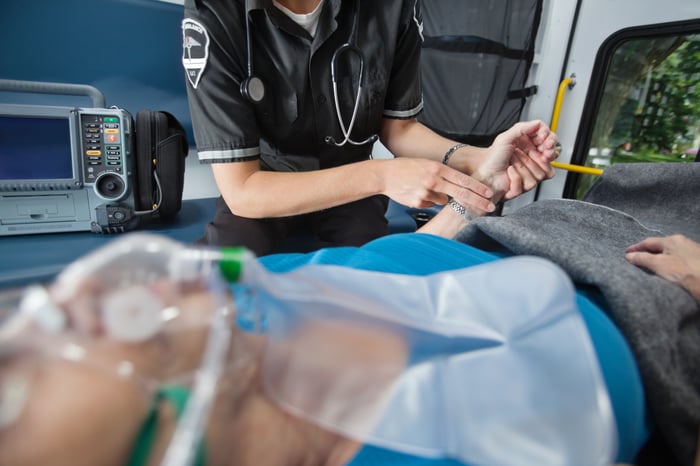
The GI bleed had been going on for some time. By the time you reach the patient – a frail little lady pushing ninety – she was vomiting bright red blood down the front of her nightgown. She was a mess, and having a hard time breathing due to the thick, clotted vomitus streaming from her mouth and nose. You quickly assemble your equipment, which includes a first-rate portable suction unit, and get to work.
This is one of many scenarios that require quick action using a portable suction unit. Whether it’s an elderly patient vomiting blood or a pediatric patient who crashed face-first from his bicycle, suctioning will play a major role in aggressive treatment and maintaining a patent airway. So let’s review some tips for performing effective oropharyngeal and nasopharyngeal suctioning.
It All Starts with Equipment
The success of your treatments is directly related to the readiness of your equipment. And when it comes to portable suction, there are several key steps to ensuring your unit will be ready when needed. Here is a short list of reminders:
- Test your unit at the beginning of each shift
- Make sure batteries are charged and fresh backups are on hand
- Clean your unit after each use
- Ensure all components are present, including a variety of suction catheters to fit each job
- Replace damaged or non-functioning units and accessories
These simple steps can prevent equipment failure on calls requiring portable suction.
Time to Suction!
Once you’ve recognized your patient is in need of suction, here are some preliminary steps in initiating treatment:
- Ready your equipment
- Make sure equipment is functioning
- Choose the appropriate suction catheter
- Preoxygenate your patient
- For at least 30 seconds, preferably with 100% oxygen
- For at least 30 seconds, preferably with 100% oxygen
- Have intubation equipment on hand
- In case your patient slips into respiratory arrest
- In case your patient slips into respiratory arrest
- Monitor your patient
- Pay close attention to vital signs and stay alert for signs of distress
- Pay close attention to vital signs and stay alert for signs of distress
Let the Suctioning Begin
Whether you are suctioning the oropharynx or the nasopharynx, there are several precautions you should take to ensure your treatment causes no further harm. Here are a few to keep in mind:
- Overaggressive suctioning can harm your patient!
- Restrict suctioning to 10-15 seconds max
- Watch for signs of hypoxia (tachycardia, decreased LOC)
- The right suction catheter can vastly improve performance
- Watch for dental hardware
- Be careful not to dislodge dental hardware, especially in the elderly
- Don’t create a second obstruction through careless suctioning
- Use caution on the elderly and pediatrics
- Elderly patients come with special risks:
- Greater potential for bleeding
- More delicate and easily damaged tissues
- Less ability to swallow effectively
- Reduced sense of pain, which can warn against aggressive suctioning
- Pediatrics have their own special considerations:
- Smaller airways, greater potential for blockage
- More precision required when suctioning
- Greater risk of hypoxemia (think suction time!)
- Practice age-appropriate approach when treating
- Elderly patients come with special risks:
Clearing the mouth and nose of obstructive secretions is paramount to effectively treating your patients. So follow these tips for successful suctioning to improve your patients’ outcomes and ensure you approach every situation with confidence.















